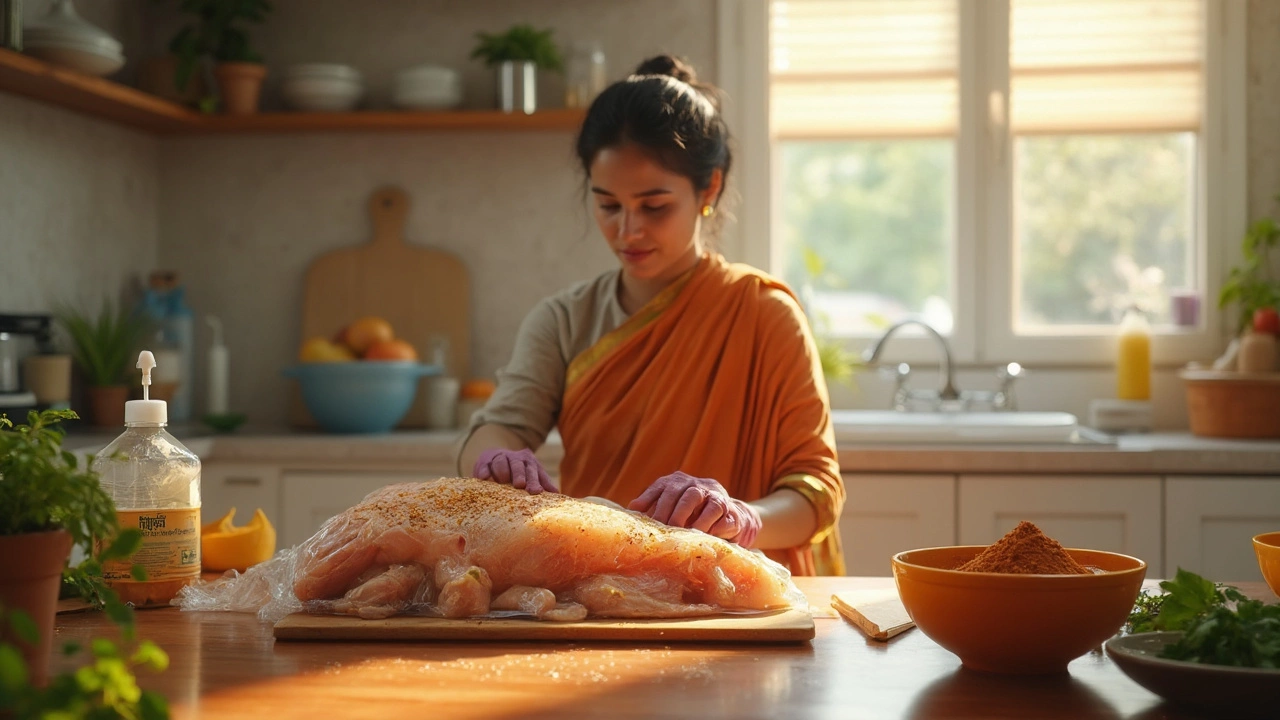Handling Chicken: Safe Prep, Marination & Cooking Tips
handling chicken when working with handling chicken, the practice of safely storing, preparing, and cooking chicken to avoid contamination and keep flavor intact. Also known as chicken safety, it covers everything from refrigeration to heat control.
One key related practice is tandoori chicken, a marinated chicken dish cooked at high heat in a tandoor, relying on yogurt and spices to tenderize and flavor the meat. Another important concept is chicken marination, the process of soaking chicken in acidic or enzymatic mixtures to break down fibers and add taste. Finally, poultry health, the overall condition of the bird, influences how you store and cook it safely.
Why Proper Handling Matters
Handling chicken isn’t just about taste; it’s about protecting your gut. Raw chicken can harbor salmonella and campylobacter, which survive at room temperature. By chilling the meat below 4°C (40°F) and cooking it to an internal temperature of 74°C (165°F), you cut the risk dramatically. These steps also keep the juices inside, preventing dry meat. If you skip any of these, you’ll notice a bland texture or, worse, a food‑borne illness.
Marination adds a safety layer, too. Acidic ingredients like lemon juice, yogurt, or vinegar lower the pH on the surface, making it harder for bacteria to thrive. At the same time, enzymes in ginger or papaya break down proteins, giving you a tender bite. Just remember to keep the marinating bowl covered and refrigerate it; leaving it out defeats the purpose.
When it comes to tandoori chicken, the high heat of a tandoor or a very hot oven (around 260°C/500°F) creates a quick sear that locks moisture inside while giving a smoky char outside. The yogurt base not only flavors but also helps maintain juiciness during that intense cooking blast. If you don’t have a tandoor, a grill or a broiler works fine—just brush the grill with oil to stop sticking.
Poultry health signs, like yellow bumps in a chicken’s mouth or unusual odor, can hint at diseases that affect meat quality. Even if the bird looks fine, buying from reputable sources ensures you start with a clean product. Healthy birds have firmer flesh, which responds better to marination and cooks more evenly.
Putting these pieces together creates a clear workflow: buy fresh, check health cues, store cold, marinate in the fridge, and cook hot. Each step feeds into the next, making the whole process smoother and safer. Whether you’re prepping butter chicken, tandoori, or a quick stir‑fry, the same rules apply.
Below you’ll find a suite of articles that dive deeper into each of these steps—classic dishes, marinade science, storage tips, and even cultural angles like chicken in Sikhism. Use them as a toolbox to sharpen your kitchen routine and keep every chicken dish both tasty and safe.

Chicken Pooping Liquid: What Home Cooks Need to Know
Ever noticed raw chicken leaking watery stuff when unpacking it for your tandoori recipe? This article breaks down why chicken sometimes releases liquid that looks a lot like poop, what that liquid actually is, and how it can affect both your cooking and food safety. You'll get practical tips for handling, storing, and prepping chicken—so your tandoori turns out delicious and risk-free. Plus, we’ll touch on telling the difference between normal juices and warning signs of spoiled meat. Keep your kitchen safe and your meals top-notch.